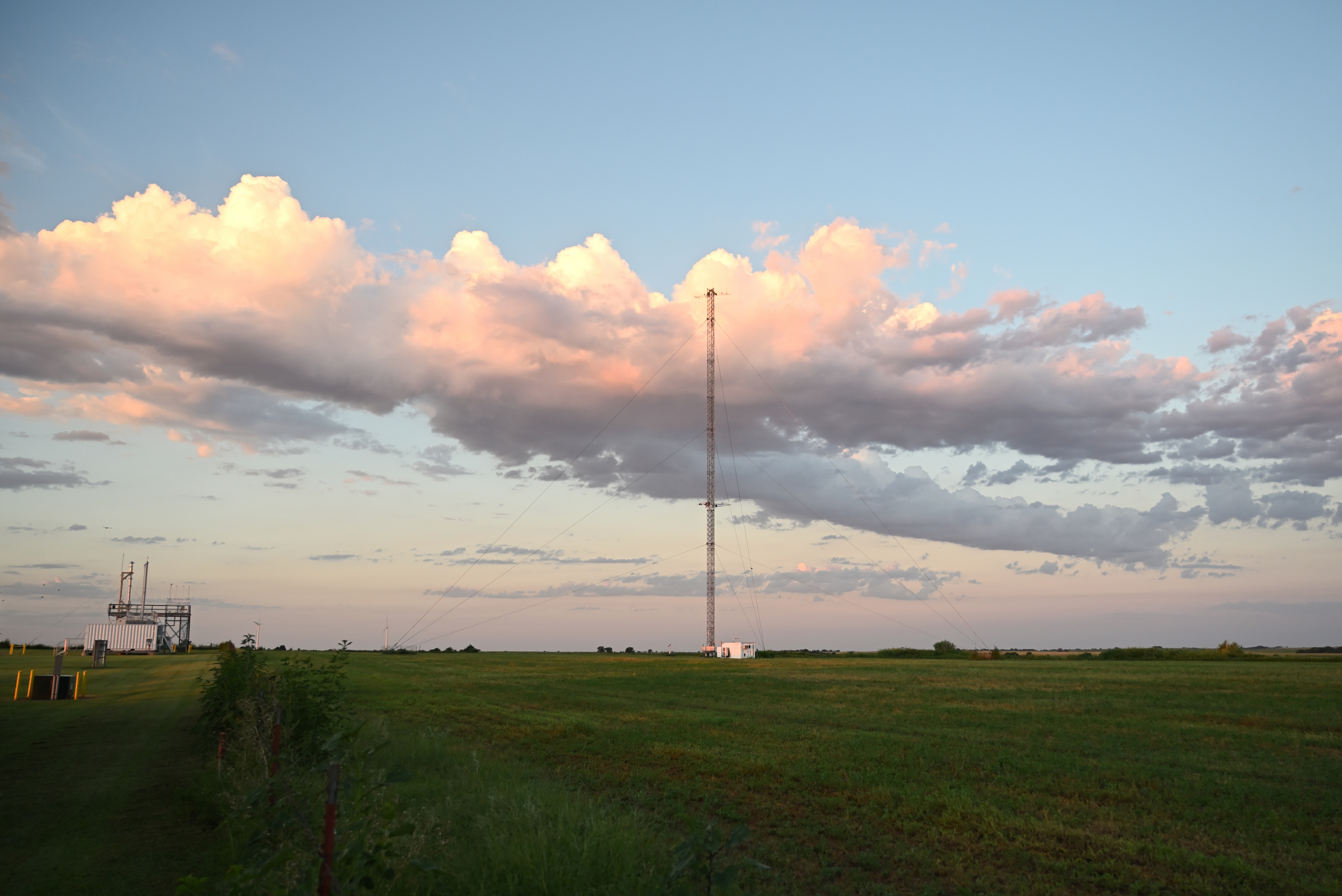LASSO Gives New Capability to Researchers
Published: 21 September 2020
For those wanting to run their own simulations, LASSO input observational data are now available

The Atmospheric Radiation Measurement (ARM) user facility’s high-resolution modeling activity is placing more power in the hands of its users.
The Large-Eddy Simulation (LES) ARM Symbiotic Simulation and Observation (LASSO) activity allows users to compare models with observations at ARM’s Southern Great Plains (SGP) atmospheric observatory. LASSO data bundles consist of LES simulations and observations at hourly intervals, as well as diagnostics and skill scores that tell users how well the model agrees with the data.
LASSO’s latest batch of data bundles includes a new addition: the high-time-resolution data that are used to generate the skill scores in the bundles and inform the LES simulations.
“As we’ve gone through and automated a lot of the LASSO processing, we now also provide the high-frequency observational data sets from which the hourly data are generated,” says LASSO Principal Investigator William Gustafson.
On their own, the high-frequency data are value-added products (VAPs) that are much closer to the original sampling frequencies. Collectively, these observations form the LASSO High-Frequency Observations (LASSOHIGHFREQOBS) VAP.
LASSOHIGHFREQOBS fulfills a key user request, says Gustafson, an earth scientist at Pacific Northwest National Laboratory (PNNL) in Washington state. In the past, users could ask the LASSO team for the input observations to compare with their models, or they might have tried to reconstruct the data.
What’s Included?
“It really helps streamline the data product processing for LASSO, which involves a chain of different data sets that have to be reformatted or merged together with other data sets.”
Jennifer Comstock, ARM’s engineering and process manager, on new LASSO operations (LASSO-O) software
The new data bundles cover 17 case dates from the 2019 shallow convection season at the SGP. Here are the individual VAPs that make up LASSOHIGHFREQOBS:
- Cloud Fraction (CLDFRAC): cloud cover from the Ka-Band ARM Zenith Radar Active Remote Sensing of Clouds (KAZRARSCL) VAP and total sky imager at 1-minute resolution
- LASSO Boundary-Layer Thermodynamics (LASSOBLTHERMO): temperature and moisture measurements in the middle of the boundary layer from the atmospheric emitted radiance interferometer (AERI) and Raman lidar at 10-minute resolution
- LASSO Doppler Lidar Cloud-Base Height for Shallow Cumulus (LASSODLCBHSHCU): cloud-base heights from the SGP Doppler lidars at 10-minute resolution
- LASSO Liquid Water Path (LASSOLWP): liquid water path from the Atmospheric Emitted Radiance Interferometer Optimal Estimation (AERIOE) VAP at 10-second resolution
- Radar Wind Profiler Wind Consensus (RWPWINDCON): horizontal-wind estimates from the SGP radar wind profilers at 10-minute resolution.
In addition to the bundled observations in LASSOHIGHFREQOBS that are produced for each LASSO case day, users also can access the related Lifting Condensation Level Height (LCLHEIGHT) VAP, which is produced every day of the year. This VAP has 1-minute resolution and contains data for multiple sites around the SGP.
Tami Fairless, an applications engineer at Brookhaven National Laboratory in New York, was the primary developer of the operations software—LASSO-O—that included the release of the high-frequency observations. Fairless received support from Krista Gaustad, a software engineer at PNNL.
“It really helps streamline the data product processing for LASSO, which involves a chain of different data sets that have to be reformatted or merged together with other data sets,” says ARM Engineering and Process Manager Jennifer Comstock, who leads ARM’s science product development efforts.
Through this process, the data meet ARM’s production-status standards, including quality control, reproducibility, and version control.
What’s Next?
“The knowledge we learned doing it this time is definitely going to speed it up next time.”
William Gustafson, LASSO principal investigator, of the LASSO-O software and the upcoming deep convection scenario
With LASSO-O and the high-frequency data, LASSO moves another step forward in serving modelers who want to run their own simulations.
“Before we had this, they could essentially take our forcings and run their model, but then they couldn’t do the post-processing steps that we do,” says Gustafson. “This is working towards allowing them to also be able to do the post-processing—or the diagnostics and skill scores—and have the data they need to do that.”
On the back end, the more routine workflow enabled by LASSO-O will reduce the amount of effort required to rerun cases or run future cases.
Later this year, the LASSO team will release reprocessed 2018 case dates with the corresponding high-frequency data.
Though the SGP shallow convection scenario is going on hiatus, aspects of LASSO-O will be used for the next LASSO scenario: deep convection from the 2018–2019 Cloud, Aerosol, and Complex Terrain Interactions (CACTI) field campaign in Argentina.
“The knowledge we learned doing it this time is definitely going to speed it up next time,” says Gustafson.
For more information, read the related data announcement.
Keep up with the Atmospheric Observer
Updates on ARM news, events, and opportunities delivered to your inbox
ARM User Profile
ARM welcomes users from all institutions and nations. A free ARM user account is needed to access ARM data.


















